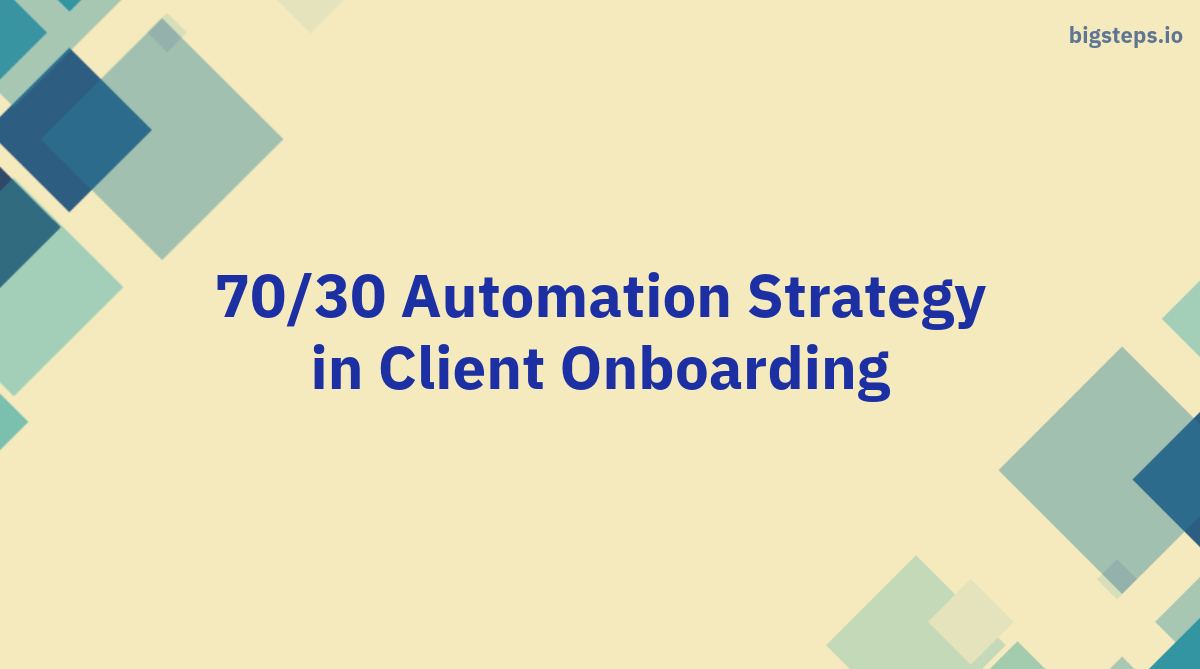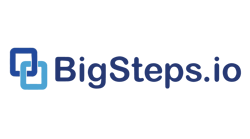70/30 Automation Strategy in Customer Onboarding
Read Time 2 mins | Written by: Vaibhav Awachat

Unlock the potential of 70/30 automation strategy in client onboarding to streamline processes and enhance customer experiences.
Identifying the Challenges in Traditional Client Onboarding Processes
Traditional client onboarding processes often involve lengthy and time-consuming procedures that can be challenging to navigate. These challenges include:
- Complex and manual workflows that require significant time and effort
- Lack of standardization and consistency in onboarding processes
- Over-reliance on individuals to drive the implementation process
To overcome these challenges, organizations need to adopt a more efficient and automated approach to client onboarding.
Introducing the 70/30 Automation Strategy for Efficient Onboarding
The 70/30 automation strategy is an approach to client onboarding that aims to achieve 70% automation within the first 30 days of implementation. This strategy involves leveraging technology and automation tools to streamline and expedite the onboarding process.
- Identify the key areas of the onboarding process that can be automated
- Implement automation tools and platforms to optimize these areas
- Continuously monitor and refine the automated processes to ensure effectiveness
By implementing the 70/30 automation strategy, organizations can significantly reduce the time and effort required for client onboarding while improving overall efficiency.
Implementing Organizational Changes to Support Automation
To successfully implement the 70/30 automation strategy, organizations need to make certain organizational changes:
- Foster a culture of automation and innovation within the organization
- Provide training and resources to employees to adapt to the new automated processes
- Establish clear roles and responsibilities for the onboarding team and ensure collaboration with other departments
By making these organizational changes, organizations can create an environment that supports and maximizes the benefits of automation in client onboarding.
Utilizing Specific Tools for Customer Success and Onboarding Teams
General-purpose project management tools like Monday, Asana, and ClickUp may not be ideal for managing highly complex projects between two organizations, especially in the context of customer success and onboarding teams. To address this challenge, organizations should consider utilizing specialized tools that cater to the specific needs of these teams.
- Look for tools that offer workflow customization specific to customer success and onboarding processes
- Choose platforms that provide templates to design and automate a large part of the onboarding process
- Prioritize tools that facilitate collaboration and communication between teams and stakeholders
By utilizing these specific tools, organizations can optimize the onboarding process and enhance cross-team collaboration.
Embracing Templating for Standardization and Improved Efficiency
Templating plays a crucial role in standardizing and automating the client onboarding process. By creating templates for common onboarding tasks and processes, organizations can ensure consistency and efficiency in their onboarding efforts.
- Develop templates for common onboarding workflows, such as user provisioning and data migration
- Automate the deployment of these templates to streamline the onboarding process
- Regularly update and refine the templates based on feedback and evolving requirements
By embracing templating, organizations can reduce reliance on individual expertise and drive standardization in client onboarding, leading to improved efficiency and customer experiences.
